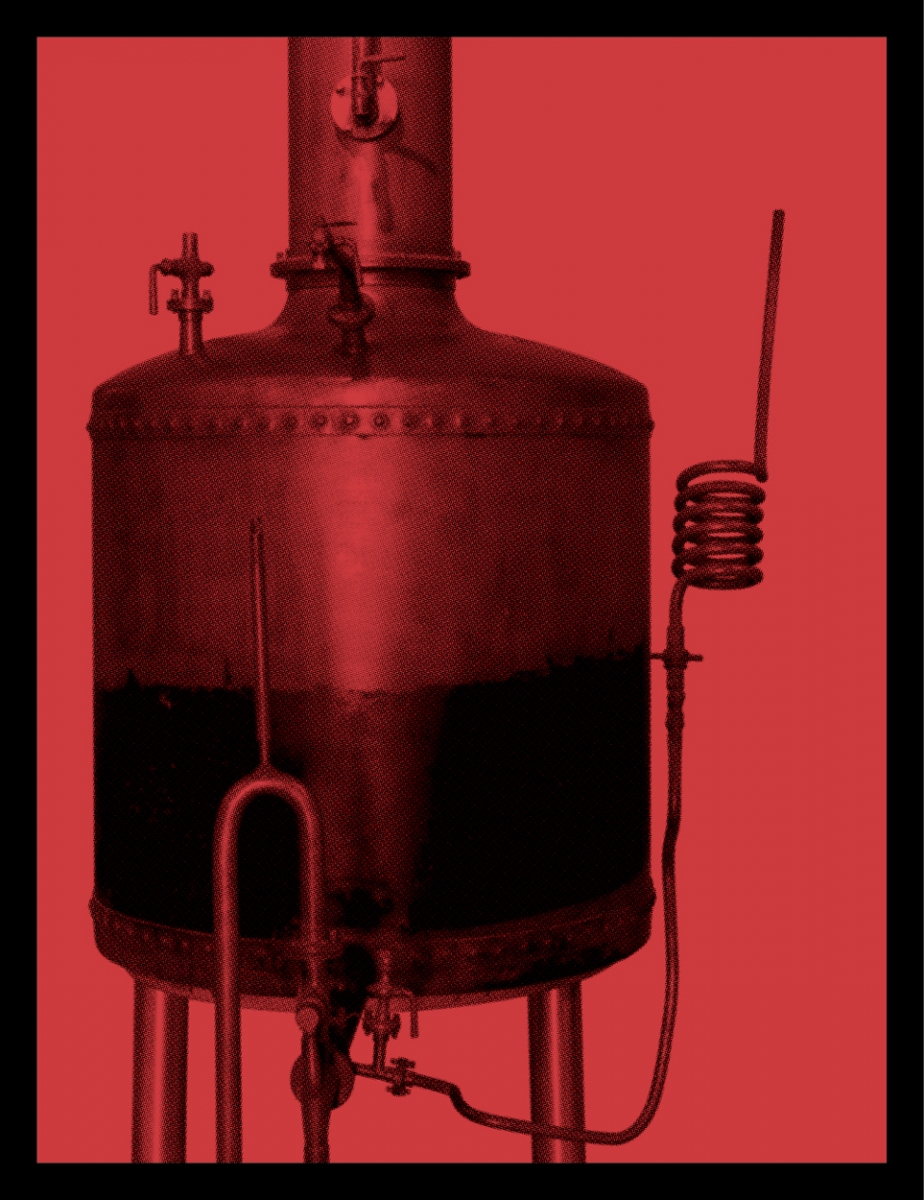Photography by Pop Winson
Robert deGroot had just built a seven-foot-tall copper still for his new business, Red Cup Distillery, located in Vegreville. Countless hours and dollars had been invested into the moonshine that was heating in that still. It was a defining moment; his first batch was nearly ready. But the look he gave his wife wasn’t one of excitement, but one of terror.
“I’m looking at her, going: ‘Honey, we’re going bankrupt,'” says deGroot. “Because the smell that came out of there was just repulsive.”
The metallic stench hinted at the terrible flavour inside. But Vegreville was part of the province’s moonshine trade during prohibition, so hooch is still as familiar to some long-time residents as the giant Ukrainian Easter egg rising from the edge of town. One of them told deGroot the smell was a normal part of the process.
As is customary with moonshine, that first batch needed to be thrown out, and the second batch was something entirely different. “It was the best booze I’d smelled in my life,” says deGroot. Since then, the liquor has been very popular, with people spending hours driving just to try it.
It’s no surprise that business owners like deGroot have a large learning curve when opening their craft distilleries. These businesses, after all, are completely new to Alberta. Before 2013, liquor laws required licensed wineries and distilleries to produce at least 2,500 hectolitres of absolute alcohol a year and breweries to produce 5,000 hectolitres of beer a year – far too much for the craft liquor industry, where product is made in small batches. (One hectolitre is equivalent to 100 litres.)
In the United States, the number of craft distilleries operating rose dramatically from around 50 in 2005 to 769 in 2015, largely due to the removal of minimum production capacities and changes to liquor laws. But, here in Canada, each province has its own liquor laws with which to contend. And, while some other provinces shed minimum production capacities, Alberta was among one of the last to remove them. In 2013, the Alberta Gaming and Liquor Commission (AGLC) reviewed the province’s manufacturing policies, resulting in the removal of production requirements and, according to Alain Maisonneuve, the AGLC’s vice-president of liquor services, several individuals immediately showed interest in starting small liquor businesses.
